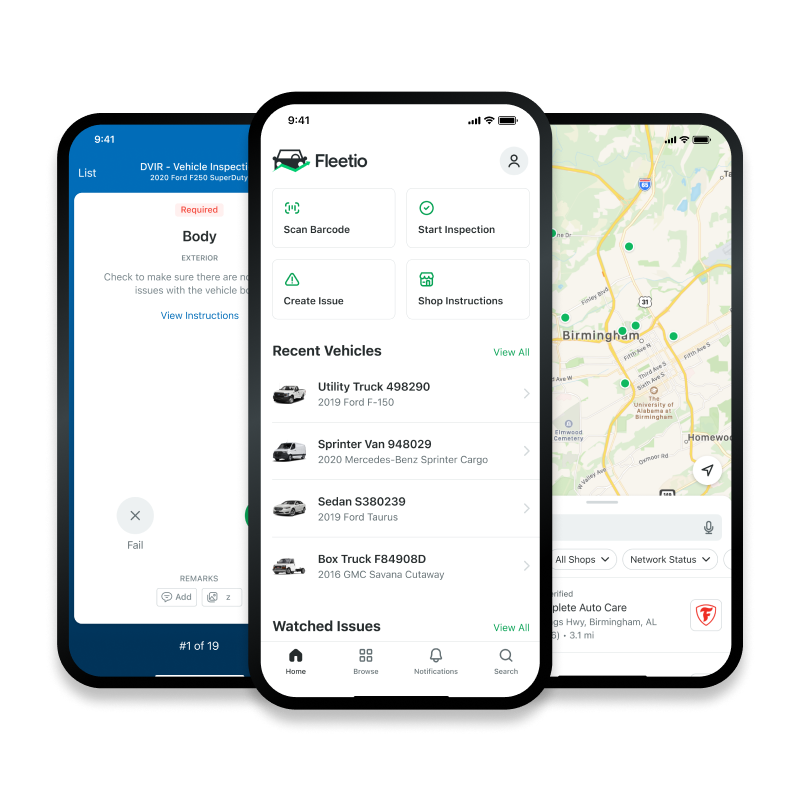How To
How to Test and Replace a Vehicle Battery: A Step-by-Step Guide
A dead battery can bring your vehicle (and your plans) to a complete stop. Whether you’re dealing with slow starts, dim lights, or electrical issues, testing and replacing a vehicle battery is a straightforward process that can save time and money.

Note
Most auto parts stores will test your battery for free if you’re unsure whether you need a replacement. Always check your owner’s manual for the correct battery type before buying a new one.
In this guide
What to Expect
- Time Needed: 15-30 minutes
- Difficulty: Easy to Moderate
- Average Cost: $212
Source: 2025 Fleet Benchmark Report
What You’ll Need
Multimeter or battery tester (or visit an auto shop for a free test)
New battery (check owner’s manual for correct type)
Wrench or socket set
Battery terminal cleaner or wire brush
Safety gloves & glasses
Battery anti-corrosion spray (optional)

How to Test and Replace a Vehicle Battery
Step 1: Locate the Battery
- Pop the hood (or check under the trunk/rear seat, if applicable).
- Identify the positive (+) and negative (-) terminals to avoid incorrect connections.
Step 2: Test the Battery Voltage
- Set a multimeter to DC voltage (20V setting).
- Connect the red lead to the positive terminal and the black lead to the negative terminal.
- A healthy battery should read 12.6V or higher when the car is off and 13.7V–14.7V when running.
- If the reading is below 12.4V, the battery may be weak and need charging or replacement.
Pro-tip
Don’t have a multimeter? Most auto parts stores will test your battery for free and let you know if it needs replacing.
Step 3: Disconnect the Old Battery
- Turn off the vehicle and remove the keys.
- Start with the negative (-) cable and loosen the clamp with a wrench.
- Disconnect the positive (+) cable next.
- Remove any battery hold-down brackets or fasteners.
Step 4: Install the New Battery
- Place the new battery in the tray, ensuring the terminals face the correct direction.
- Secure the hold-down bracket to prevent movement.
- Connect the positive (+) cable first, then the negative (-) cable.
- Tighten the connections but avoid over-tightening.
Step 5: Test the New Battery
- Start the vehicle and check for quick, strong ignition.
- Use a multimeter to confirm the voltage is within the recommended range.
- Apply battery terminal protector spray to prevent corrosion.
Avoid These Common Mistakes
- Skipping the battery test before replacing. A slow start doesn’t always mean the battery is bad. Test the voltage first—a weak alternator or corroded terminals could be the real issue. If in doubt, get a free battery test at an auto shop.
- Disconnecting the positive cable first. Always remove the negative (-) terminal first to prevent sparks or short circuits. Reconnect the positive (+) terminal first when installing the new battery.
- Forgetting to check battery size and specs. Not all batteries fit the same. Make sure to match the correct size, terminal placement, and cold-cranking amps (CCA) for your vehicle.
Track service histories across all fleet assets
Fleetio makes it easy to log battery replacements, track service history, and set automated maintenance reminders, so every vehicle stays road-ready.
Try Fleetio for FreeFAQs
How often should I test my vehicle battery?
Check your battery at least twice a year – once before winter and once before summer. Most auto parts stores offer free battery tests if you’re unsure about its condition. If managing a fleet, add battery tests to your standard preventive maintenance checklist.
What are the signs of a failing battery?
Common signs include slow engine start, dim headlights, electrical issues, or a dashboard battery warning light. If your battery is over 3 years old, it may need replacement.
How long does a car battery last?
Most vehicle batteries last 3 to 5 years, but climate, driving habits, and electrical load can impact lifespan. Fleet vehicles may need more frequent checks.
How much does a new battery cost?
A standard car battery costs $100 to $250, depending on the type and brand. Installation at a shop may add additional labor costs.
Can I replace my vehicle battery myself?
Yes! If you have the right tools, swapping a battery is a quick DIY job. Just follow safety precautions and dispose of the old battery properly at a recycling center.



